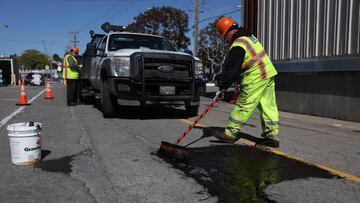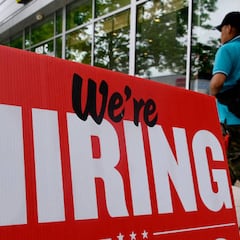Which states have the highest and lowest payment for unemployment benefits in 2023?
Unemployment Insurance provides workers that lose their jobs financial support for a time while they look for a new position but the amount paid varies.

While unemployment has hit an historic low nationwide in January, there have been a series of high-profile layoffs, especially in the tech industry. For those workers who lose their job through no fault of their own they may be able to receive unemployment compensation. Unemployment Insurance programs provide financial support to workers for a period of time while they find a new position.
However, despite being a a federal-state joint venture, beyond some basic federal mandates the states can run their programs with a fairly free hand. This means that there is no uniform set of rules to qualify, nor types of workers who are eligible to file a claim. Additionally, the weekly amount can vary greatly from one state to the next. Here’s a look at the UI landscape around the United States in 2023.
Which states pay the most in unemployment
The amount that those who find that they are out of work and eligible to collect unemployment benefits varies greatly from state to state. According to Savings to Invest, a personal finance blog, the stingiest state is Mississippi paying out at most $235 per week, but at least the state pays up to 26 weeks of benefits. Alabama, Louisiana, Tennessee and Florida all pay at most $275 per week, but Florida will only cover 12 weeks currently.
At the other end of the of the spectrum is Massachusetts which boosts household incomes with up to $1,051 per week plus $25 per dependent. Additionally, recipients may qualify for up to 30 weeks of benefits. Following the Massachusetts for highest benefits paid out are Washington, Minnesota, New Jersey and Hawaii which all pay 26 weeks of benefits ranging from $999 to $765 per week.
| Highest paying states | Lowest paying states | ||
| Massachusetts | $1,051 (+$25/dependent) | Mississippi | $235 |
| Washington | $999 | Alabama | $275 |
| Minnesota | $857 | Florida | $275 |
| New Jersey | $830 | Louisiana | $275 |
| Hawaii | $765 | Tennessee | $275 |
How does unemployment insurance work?
Unemployment insurance is financed through both state and federal unemployment taxes on employers. The state payroll taxes for unemployment insurance vary by state but the federal tax is uniform. As of 2021, the Federal Unemployment Tax Act (FUTA) tax rate is 6 percent of the first $7,000 paid to each employee annually.
The federal government ensures that all states provide basic protections for eligible workers but imposes minimal requirements. States can choose the eligibility criteria, such as the type and duration of prior employment.
The rate that benefits replace wages for the unemployed vary widely from state to state. So too does the number of weeks of unemployment compensation but most states offer 26 weeks of regular unemployment compensation.
If you’ve lost your job, you have rights when it comes to discrimination, keeping your health care coverage, and qualifying for unemployment benefits. Learn more about your rights and how to protect them with resources from the Department of Labor. https://t.co/Rl142ps4eI pic.twitter.com/yKovfyEUMO
— USAGov (@USAGov) February 18, 2023
Who is eligible for unemployment compensation?
In order for a worker to claim unemployment compensation he or she must lose his or her job through no fault of their own. If a worker leaves their job voluntarily they most likely will not qualify for unemployment insurance, there are exceptions. Additionally, those who are self-employed such as contractors or gig workers as well as undocumented workers generally cannot claim jobless aid.
The worker must also be actively looking for gainful employment, the “active work search requirement” can be fulfilled in a variety of ways and varies from state to state. It generally includes applying for a job in person, by mail or online through a employment service or state job listings board. Another way is applying for work through a temporary staffing agency or registering for work or reemployment services with the state career center. The requirement could also be fulfilled by interviewing for a job, attending a job fair or other event that would help a worker find a new job.
How are unemployment benefits paid?
Many states require that a worker go through a “waiting week” in which no benefits are paid. Only in the following week can a laid off worker file their initial claim. Even then, some states will not make the first payment until three weeks after a worker starts claiming weekly benefits, the federal standard.
Those collecting jobless aid can receive their unemployment payments via paper check, direct deposit to an account or pre-paid debit card, or on a state issued pre-paid debit card. How states send the payments again varies from state to state but states cannot require that those claiming benefits use a state issued pre-paid debit card according to Consumer Financial Protection Bureau.
Claimants should be aware that unemployment benefits are taxed by the federal government and some state governments as well must be declared on tax returns.
If you are working part time as a tutor because your full-time job as a systems analyst was eliminated, were you counted in the recent 3.4% unemployment rate? https://t.co/zOve1UW69v
— St. Louis Fed (@stlouisfed) February 17, 2023
Claimants may have to pay back any over payments
Related stories
In the event that a worker claiming unemployment benefits receives excess amounts they most likely will be asked to repay the overpaid amount back to the state. Overpayments can occur because of unintentional filing errors by the filer or the agencies with which they are filing. The claimant can appeal collection to avoid having to return the money but usually has to do so within a set time limit set by the state. Claimants should check with their state’s unemployment agency for specific details.
If the overpayments were due to intentional erroneous filing by the claimant that constitutes fraud and can have legal implications and result in criminal charges.


